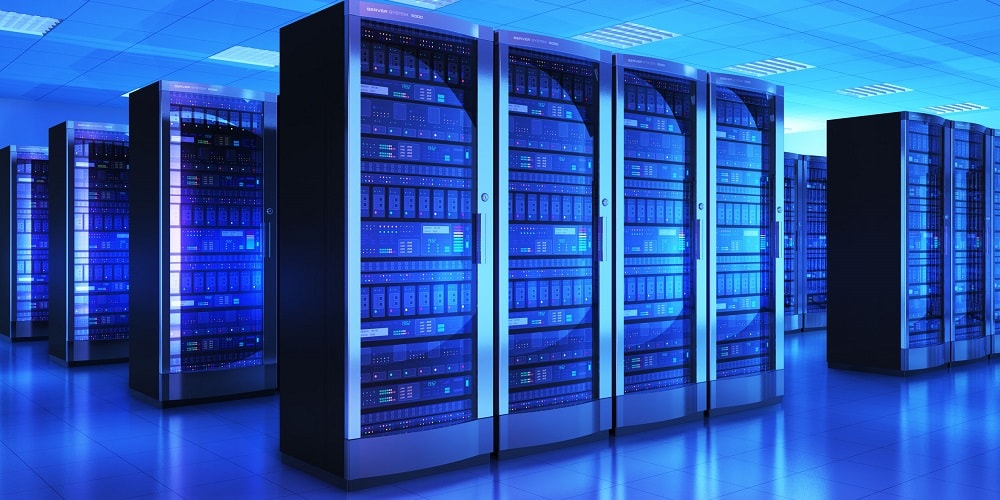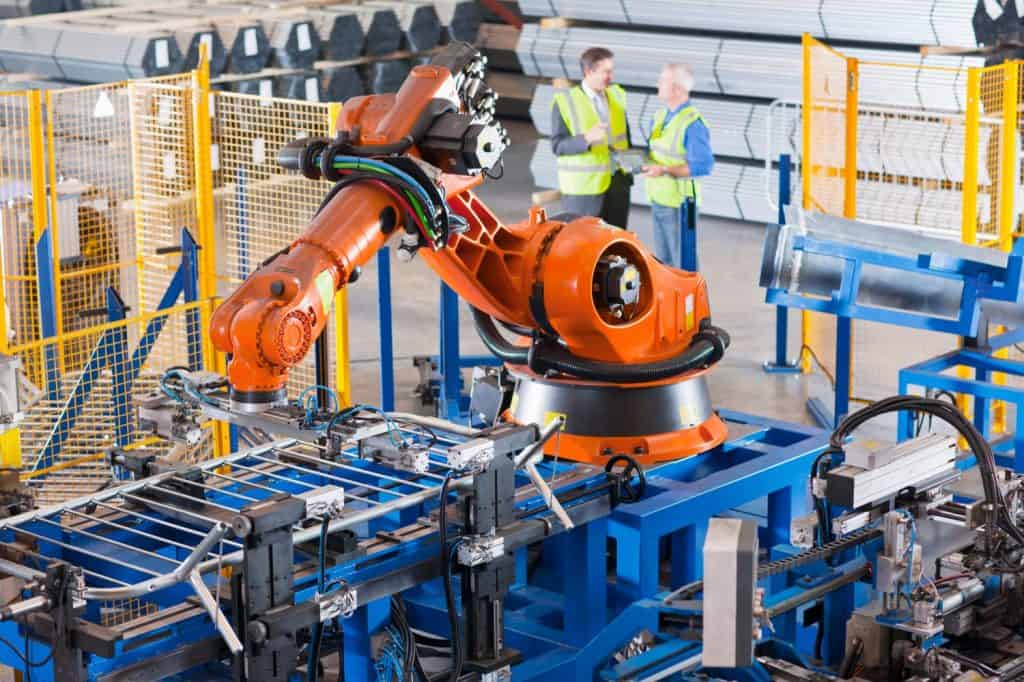
© Ground Picture/Shutterstock.com
Big Data vs. Small Data Key Points
- Big data are massive data sets used to gather real-time information.
- Small data are manageable data sets, generally gathered internally.
- Learning how to use both is the best approach to data analysis for your organization.
Big data vs. small data, which should you be paying attention to? Data is generated throughout an organization. You’re gathering it when selling products, producing things, and even just interacting with customers. However, when we start talking about data, the notion of big data and small data enter the room.
So, what do these mean? That, my dear reader, is what we’re going to get to the bottom of by the end of this guide. Hopefully, you’ll come away with a better understanding of how they work and where to use them.
What Is Big Data?

©Oakland Images/Shutterstock.com
So, unless you’ve forsaken the outside world and taken up living in a cave, you’ve likely heard big data bandied about. But, what is it? At its core big data is all the data generated in a large mass. Typically, most data sets you’ll work with within an organization aren’t going to come close to approaching big data, as we’ll explore a bit in a moment.
Big data has gained a fair bit of steam in the last decade, at least since I entered the tech space. There was a run on data scientists trained in the interpretation and manipulation of these large data sources. As we’ll see, there is a reason it seems like such an unruly subject.
For the average person, this form of data is going to be incomprehensible in its raw form. Sure, you can take a look at logs and the likes from servers to get an idea of the data in your workplace. However, that isn’t the whole picture painted by big data.
The Whole Picture
Big data isn’t something you’ll encounter in your workplace, as I’ve stated. These data sets are typically purchased or scraped from publically available sources. Your usual suspects are places like social media, scientific applications like sequenced genomes, and sensor readings from sophisticated electronics.
So, why use it? A keen understanding of this sort of data readily enables you to start looking for trends, or correlations, throughout a vast array of data points. This can be useful for the likes of forecasting, product design, and so forth.
However, this doesn’t come without a few caveats. When I say the word big about this data, I don’t mean something you can readily collect and collate on your own on your work laptop. The big boon of working with this sort of data is the speed at which you gather it. We’re talking real-time generation and collection, provided you’ve engaged the right sort of data collection service.
Shortcomings and Drawbacks
Big data is heterogeneous by nature, as it pulls from disparate data sources. Looking for forecasts, trends, and so forth between social media posts and something like stock market reports can seem like a fool’s errand for the average individual.
As such, the main caveat is you need the right training and tools to make the most of this data set. Typical tools of the trade for data science are math-centered libraries for Python. Additionally, a good foundational knowledge of R, Matlab, and other programming languages can help in navigating such a massive pool of information.
Further, one of the main drawbacks is the prevalence of misinformation. You can trust the data sources from within an organization, but what about outside sources? Given the volatility and falsehoods spread on the likes of social media, it can be a potential minefield if you hone in on the wrong data point.
Collection Method

There are two main contenders when it comes to how you manipulate big data. You’ll need a pipeline in place for the likes of collection, typically handled by Amazon Web Services Kinesis or the Google Pub/Sub services. Given the sheer amount of information flooding in, it wouldn’t stand to reason that you have the infrastructure internally.
Further, you’ll need something to process the data. Given the sheer size of it, it would make even the beefiest of server farms in your average business campus choke. However, a service like Spark maintains the pipeline, allowing you to readily take a closer look at the steady flow of information as it comes in.
Processing and manipulation are handled through clusters or data marts, which are handled by two different classes of employees. Clusters are generally handled by data scientists. Data marts are the domain of analysts, which you should have on staff regardless.
Storage Needs
You need a ton of storage to handle this. While most servers can handle storage in the 100s of terabytes, we’re talking petabytes and exabytes for some of these workloads. As such, you might have to engage further outside services to handle storage.
While larger organizations might have the resources and infrastructure necessary to store the data, you have to act quickly upon it. These streams of information are only relevant for so long. As such, it is going to come down to what your overall intent is when it comes to taking an approach driven by datasets.
On the plus side, utilizing these data sets means you’re investing in scale. Big data excels when scaling, provided that’s your overall goal.
Structure
Big data is unstructured by default, as previously mentioned. As such, it is up to your data scientists and analysts to manipulate it into a more easily digestible form. Think about it, if you’re pooling information from billions of disparate sources, it isn’t going to make much sense in an Excel spreadsheet, is it?
Structuring takes place after data mining and the use of potential machine learning techniques. You’ll likely be presented with the data in a visualized form. Typical visual presentations aren’t limited to the likes of written reports, videos, non-relational databases, and custom-made visual tables.
What Is Small Data?

So, we’ve covered big data in depth, but what about its counterpart? Small data lives up to its name. It is catching on in a big way in several industries currently. While we aren’t likely to see a shift away from big data, there is more than likely going to be a hybridized approach to data science in the coming years.
To summarize, small data is material you can manipulate traditionally. If you’re a Six Sigma Green or Black Belt, you already know the importance of data. Small data can be pulled from a variety of sources, whether they’re external or internally generated.
As you’ll discover, it is a far more manageable approach that is handled internally with few new specialized employees needed.
Drilling Down
By its very nature, small data is a high-quality, structured approach to data. It can take the form of things like internal sales reports, patient records, production runs, and so forth. As such, you’ve likely been using small data in your organization, depending on the size of your campus at least.
When it comes to the big data vs. small data debate, there isn’t a question of the veracity and precision of the data delivered. 10 out of 10 times, small data is going to be more refined and structured by default. If you’re keeping track of something like sales through the use of a spreadsheet, you’ve already taken the legwork out of structuring it.
Shortcomings and Drawbacks
Small data does have some drawbacks, though they aren’t nearly as pronounced as big data. One of the main issues comes down to scale. While forecasts and trends are formed through the use of small data, they don’t paint the whole picture.
Small data also doesn’t scale with ease. While big data scales horizontally, small data does so vertically. With the right sort of preparation, this isn’t an issue. Further, you might need those outside sources to pull together concepts and designs for your next product. While small data can provide insights, big data might be more useful in this case.
Collection Method

You don’t need specialized pipelines or engaging outside services for small data. At its core, it lives up to the name small. Typically, you’re already collecting and structuring this data from the jump. Further, there isn’t a need for specialized processing to handle things.
When it comes to the big data vs. small data debate, small data has a definite edge when it comes to the method of collection. For example, if you’re in the medical industry, you can readily see patient information. This information is typically gathered into a tabulated, structured database. You don’t have to go scraping social media or financial streams for insights into who your patients are.
Storage Needs
This might shock you, but you don’t need a massive server farm to house all of the small data you gather. Datasets come in small sizes, like megabytes, with the absolute largest numbering in the terabytes. Realistically speaking, you could dedicate a single storage server to handle all of your small data.
Structure
As we’ve already discussed, there isn’t much need for pooling disparate sources and collating them into a more digestible format with small data. You’ve likely already structured your data when looking at it. It might be on Excel spreadsheets or SQL databases, but it is already in a form that most analysts would be comfortable using.
Big Data vs. Small Data: Which to Choose?
So, we’ve discussed the differences, but which is the best? Honestly, this is a situational sort of use case. It depends on the insights you wish to develop. Internal sales data can provide an eye on what your big ticket items are. However, if you’re looking to gauge the price of raw materials for manufacturing, that might not be readily done with your internal historical data.
Big Data vs. Small Data: Real-World Examples

©Juice Flair/Shutterstock.com
So, how does big data vs. small data apply to the real world? Imagine a car manufacturer for a moment. They’re likely using small data to see what their best-selling cars are every month. They can run sales and additional promotions to capitalize on said popularity, boosting revenue.
However, when another production run starts, things like steel prices and electronic components aren’t going to be reliably analyzed through small data. For that, they’d turn to big data, using real-time sales information from suppliers to see the going rate for sorely needed materials.
Other Useful Tools and Concepts
Want to see how data can transform your business? Motorola went from a flagging company to an industry giant in just a few short years by embracing Six Sigma and using data-driven decision-making to guide its production.
Further, you can see why data-driven decision-making is driving business forward today. The modern era poses many interesting quandaries, but data can help you make the best of navigating such an information-dense period.
Conclusion
When it comes to data big and small, it comes down to what you need for your organization. Learning the applications and differences between these data types can provide rich insights to help guide your business forward, prepared for whatever tomorrow brings you.
The image featured at the top of this post is ©Ground Picture/Shutterstock.com.